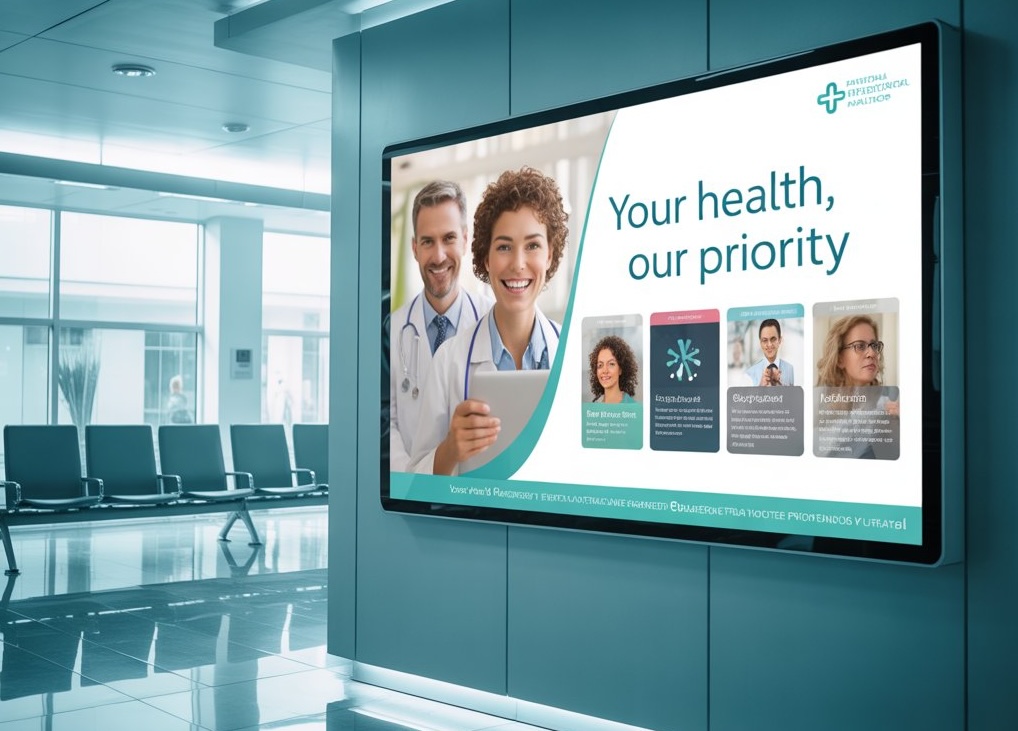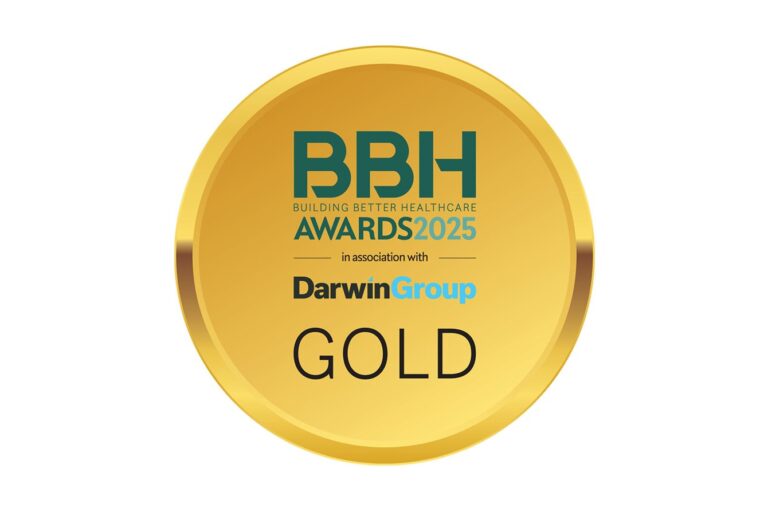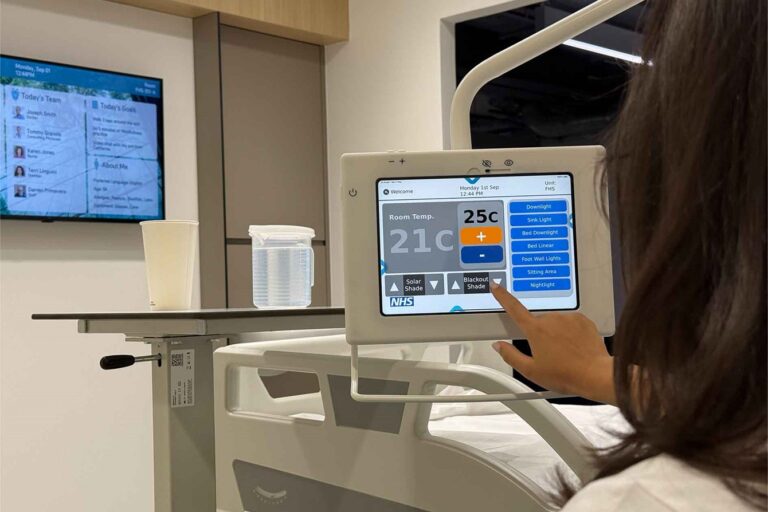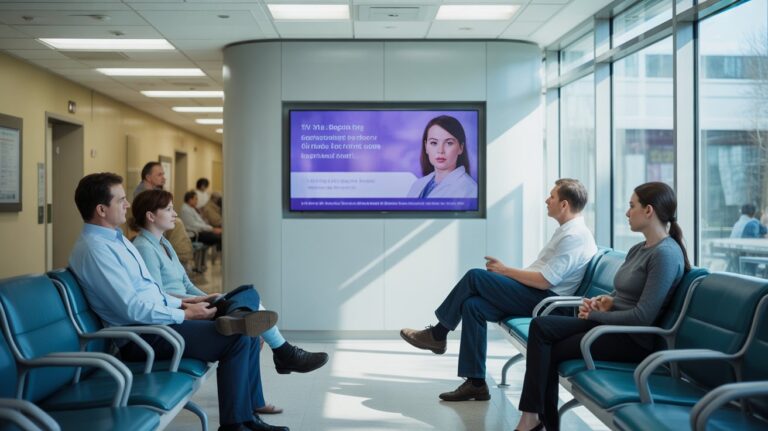
From information chaos to governance clarity
Hospitals are drowning in information, but patients and staff are still in the dark. Patients queue at reception for basic updates. Staff answer the same questions hundreds of times. Critical guidance changes faster than printed notices can be replaced.
Digital signage solves the last-mile communication challenge: delivering the right message to the right people, at the right moment, in the right place.
From information chaos to coordinated clarity. Centrally managed screens across reception areas, clinics, wards, pharmacies, and staff zones reduce pressure on front desks, improve patient understanding, and keep guidance consistent across multiple sites.
Done properly, digital signage isn’t just TVs on walls—it’s a governed, accessible, measurable communications system that works as hard as your staff do.
Airwave Healthcare delivers the platform, templates, and service wrap to make this work from day one — securely, at scale, and with the governance NHS estates, IT and comms teams expect.
The communication gaps hospitals struggle with
The challenges are well-documented: inconsistent messaging, outdated information, repeated enquiries, and inaccessible notices. These communication failures drain staff time and patient confidence. Understanding exactly where and how these breakdowns occur is the first step toward fixing them.
Inconsistent messagesDifferent buildings show different instructions, while out-of-date print lingers on walls.
Last-minute changesClinic delays, room moves, and visiting-rule updates don’t reach people in time.
Staff overloadRoutine queries and interruptions drag clinicians and admin staff away from their work.
Repeated questionsReception teams field the same asks — opening hours, directions, parking, pharmacy status.
Accessibility risksSmall type, low contrast, and jargon make key information hard to act on.
Where digital signage helps most (by location)
The right screen in the right place solves real problems. Rather than scattering displays randomly across the hospital, focus on locations where information bottlenecks cause the most frustration. Here are the high-impact zones and the outcomes you should expect.
1) Main reception and entrances
- Welcome, today’s notices, live wait-time or clinic status boards.
- Wayfinding to clinics, imaging, wards, pharmacy, café and exits.
- Safety and infection-control prompts.
Outcome to aim for: fewer basic enquiries at the desk; faster self-navigation.
2) Clinics and waiting areas
- “Now calling” or “Running X minutes behind” boards (manual or data-fed).
- Prep instructions (testing, paperwork) and patient information videos.
- Clear visitor guidance and chaperone policies.
Outcome to aim for: lower perceived wait times; better appointment preparedness.
3) Pharmacy
- Queue screens, opening times, collection points, OTC guidance and safety notices.
Outcome to aim for: smoother flow; fewer “are you open?” interruptions.
4) Wards and day units
- Visitor hours, hand-hygiene reminders, meal rounds, discharge steps.
- Multi-language support for key notices.
Outcome to aim for: consistent, compliant messaging without paper churn.
5) Staff areas
- Rota highlights, escalation protocols, training reminders, rapid alerts.
Outcome to aim for: fewer broadcast emails; faster awareness of priority updates.
6) Public spaces (corridors, cafés, lifts)
- Wayfinding nudges, wellbeing content, site news, and community information.
Outcome to aim for: less congestion; better patient experience across the estate.
What makes it work?
Running digital signage well is less about technology and more about structure. Clear ownership, defined priorities, accessibility standards, and measurable outcomes ensure the system remains current, trusted, and compliant. With these guardrails in place, signage becomes a reliable communications channel rather than another piece of visual clutter.
Governance
Ownership matrix
Define who creates, approves and publishes content by location (Comms, Clinical Leads, Estates, Pharmacy, Security).
Priority ladder
Normal → important → urgent → emergency, with time-boxed expiry rules.
Playbooks
Templates for clinic delays, room changes, visitor policy, severe weather, system downtime.
Accessibility and inclusion
Align with WCAG principles and the NHS Accessible Information Standard.
Minimum type size for viewing at 3–5 metres; high-contrast colour pairs; plain language copy.
Subtitled videos; avoid text-heavy slides; use pictograms and arrows for wayfinding.
Provide multi-language variants for critical notices.
Measurement
Reception
% reduction in basic desk enquiries; average queue length.
Clinics
Accuracy of displayed wait times; FFT comments referencing information clarity.
Pharmacy
Queue time variance; interruption rate at the counter.
Staff areas
Acknowledgement rate for critical updates.
Report monthly; retire content that isn’t read.
Platform essentials: simple, secure, scalable
Core Capabilities
Designed for single or multi-site NHS estates, a centrally managed digital signage system keeps content current, governed and measurable — with the controls IT, estates and comms teams expect.
Create, schedule and update content from one place; target by site, building, department or screen group.
Role-based permissions with optional approvals to keep publishing safe, consistent and auditable.
Branded layouts designed for legibility: high contrast, large type, subtitles and multi-language variants.
Granular playlists per zone; dayparting for clinics, pharmacies, public areas and staff spaces.
Trust-wide or site-level overrides with pre-approved emergency templates.
Pull in live information where useful (e.g., clinic delays, wayfinding, service updates).
Players cache scheduled content, report health and flag issues for support.
Managed access, encrypted transport and audit trails aligned to NHS expectations.
Measure reach and outcomes; monthly reporting informs content and operational decisions.
Training for local publishers and ongoing assistance to keep screens effective.

Implementation: from pilot to scale
Phase 0 — Scoping (1–2 weeks)
Map priority locations and screen counts per site. Agree governance, KPIs and accessibility standards.
Phase 1 — Pilot (4–6 weeks)
10–20 screens across reception, one clinic, pharmacy and one staff area. Use Airwave templates; run 3–4 planned scenarios (clinic delay, room move, pharmacy update, emergency message). Measure results vs baseline.
Phase 2 — Scale (6–12 weeks)
Roll out to remaining buildings; train local publishers; formalise monthly reporting.
Phase 3 — Optimise (ongoing)
Quarterly content refresh; add data feeds where useful; prune low performers.
Costs and ROI (what to expect)
Understand the investment and the payoff at a glance. Exact figures vary by site size, screen count and network readiness, but the cost components and savings levers are consistent across NHS estates. One-time costs typically include:
- Hardware: screens, players, mounts, network points.
- Implementation: site survey, installation, configuration, training.
Recurring costs typically include:
- Software & licences: central management, templates, reporting.
- Support & maintenance: monitoring, updates, content services.
Return on investment is realised in both direct savings and indirect value:
- Staff efficiency: fewer repeated questions at desks, freeing time for clinical and admin staff.
- Patient experience: clearer communication reduces complaints, stress, and missed appointments.
- Operational agility: rapid updates and emergency overrides avoid costly disruption.
- Consistency at scale: reduced printing and distribution costs across multiple sites.
- Data-driven improvement: reporting and KPIs guide smarter campaigns and future savings.
Digital signage pays back by reducing wasted time and duplication, while supporting better patient outcomes and compliance with communication standards.
Mitigate the risks
Without clear guardrails, even the best signage programmes can slip. These are the most common risks we see, and the controls we apply from day one to keep content reliable, readable, and secure
Content rotFixed by clear ownership, expiry rules and monthly reports.
Screen sprawlStart with a pilot; expand by use case, not by corridor.
Unreadable messagesEnforce templates with tested type/contrast.
IT bottlenecksRemote management, standard builds and clear network requirements.
Frequently asked questions
Got questions? The Airwave Healthcare team is here to help. But to save you a call for the quick stuff, we’ve pulled together a handy list of FAQs covering the things we get asked most often.
What are the ongoing costs for licensing, support, and maintenance?
We offer clear pricing: a one-off cost for hardware and setup, then an annual licence and support fee per screen. This includes software updates, remote monitoring, and helpdesk support. There are no hidden extras.
Can digital signage be updated remotely and in real time?
Absolutely—modern systems are typically cloud-based, enabling centralized control and instant messaging.
How scalable is it if we start with one department but want to expand trust-wide?
The system is designed to start small and scale. A pilot might be 10–20 screens, and from there it can grow across clinics, staff areas, wards, and public spaces without needing new infrastructure or software
Can digital signage be interactive—like wayfinding kiosks?
Yes. Touchscreens, interactive maps, and mobile-triggered content are all possible with the right setup.
Is digital signage more environmentally friendly than printed signs?
While the setup has an electrical footprint, it reduces the waste and recurring cost of printed materials.
Who can publish content?
Role‑based permissions with optional two‑step approvals.
How easy is it to update content across multiple sites?
Easy! Updates can be published from a central dashboard, either to a single screen, a department, or an entire Trust in seconds. Templates standardise content so local staff can update their own notices without losing consistency
Can we control who publishes content, and how is governance managed?
Yes. Role-based permissions mean only approved users can publish, and optional two-step approval workflows add an extra layer of governance. Every update is logged in an audit trail so you always know who published what, when, and where.
How do we ensure accessibility?
Templates are designed for large type, high contrast and plain language; we support multi‑language variants and subtitles.
What happens if a screen loses connection or goes offline?
Each player caches scheduled content locally, so it continues to display even if the network drops. If there’s an outage, IT and support teams receive automated alerts so the issue can be resolved quickly.
How do you handle urgent or emergency messaging?
Designated users can trigger overrides that take over all screens in a building or across the Trust within seconds. Emergency templates (fire, severe weather, system downtime, etc.) are pre-built and approved to avoid delays.
Any quick content ideas to get started?
Health tips, local updates, emergency alerts, wayfinding maps, weather, staff intros, ambient visuals, testimonials, and real‑time queue info all work well..

Dean Moody
Healthcare IT & Patient Engagement Specialist
Dean has worked in Healthcare IT across Europe since 1995. His early career focused on WiFi and RTLS (real-time location systems), and from 2013 onwards he embraced patient experience and engagement technologies. After leading his own IT support firm, he spent 20 years working in France before dedicating his recent career to designing NHS-centric patient engagement solutions that inform, educate, and entertain patients and staff.



